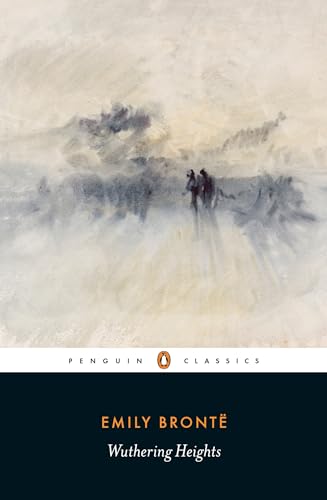Welcome to my review of Wuthering Heights, a wild ride through moors and madness, penned by Emily Brontë. This book whirls you into a world where love, revenge, and ghostly winds crash together like a soap opera written by a Shakespearean ghost. The characters are as complex as a three-tiered wedding cake with missing layers, and the Gothic atmosphere might just spook you into checking behind your couch for lurking specters. But hey, that’s why we love it, right?
In a nutshell
Wuthering Heights by Emily Brontë is a classic Gothic novel that delves into themes of love, revenge, and the supernatural. It takes place in the eerie moorlands of England, where the lives of two families, the Earnshaws and the Lintons, are intertwined through a tumultuous and passionate saga. The story’s intense emotions and haunting atmosphere make it a staple in Gothic literature. Brontë weaves a tale of complex characters whose relationships explore the darker side of human nature without giving away the ending.
Exploring Complex Characters and Relationships in Literature
Arguably, no book captures complex characters and relationships quite like Wuthering Heights by Emily Brontë. I remember reading it on a stormy night—much like the weather in the book—and thinking, “Wow, these folks make my family reunions look like a picnic!” It’s a big ol’ stew of love, hatred, revenge, and obsession. And boy, does it make for a heck of a read!
The main duo, Heathcliff and Catherine, could win an award for the most dysfunctional relationship. Their love story could easily be mistaken for a horror movie. They love each other but are also hell-bent on making each other miserable—and everyone else. It’s like watching a slow train wreck, but you can’t look away. I remember thinking, “If only my high school crush had that kind of dedication, maybe I’d have a fairytale ending by now!”
And then there’s the whole Earnshaw and Linton family drama. It’s like a TV soap opera, minus the commercial breaks. Relationships in Wuthering Heights are as twisted as a pretzel. You need a diagram to track who loves who, who hates who, and who’s just plain confused. I had to rely on my doodling skills just to keep up!
It shows how love can be an all-consuming fire or a gentle flame, depending on how you handle it. This timeless classic gives us a peek into the darker sides of human nature. It leaves us pondering how far love can drive a person. If you’re feeling brave enough to venture into the stormy hearts of the characters, you’ll certainly come out with a story to remember.
Now, let’s put on our detective hats as we explore the mysterious Gothic atmosphere and setting in the next section.
The Enigmatic Gothic Atmosphere of Wuthering Heights
Emily Brontë sure knew how to create a spooky vibe! In Wuthering Heights, she transports readers into a world filled with moaning winds, isolated moors, and a house that’s seen better days. You know, it’s like when you visit that creepy aunt’s place and notice the cobwebs have cobwebs. The Gothic setting in this novel really knows how to give you goosebumps, even if you’re just sitting on a comfy couch with a cup of cocoa.
The setting plays a big role in the book. Wuthering Heights isn’t just a house; it’s practically a character! The name itself means “turbulent weather,” and boy, it lives up to that. The constant howling winds and eerie isolation set up the perfect storm for the drama that unfolds inside. It’s like a live-action soap opera, where the scenery is a grumpy old director yelling “Cut!” every time a window rattles.
Picture yourself standing on those Yorkshire moors. You’d feel tiny against the vastness, wouldn’t you? That’s exactly how some characters feel in this dark and mysterious setting. And let’s be honest, having a ghost or two always helps ramp up the Gothic atmosphere. It’s as if the moors whisper tales of love and vengeance—just not the bedtime kind.
Now, as we wander away from the dark corners of the house, it’s time to shine a light on the novel’s fiery themes of revenge and passion!
Themes of Revenge and Passion in Wuthering Heights
Wuthering Heights is a tale where revenge and passion tango like two drunk cousins at a family wedding. I mean, who knew a love triangle could end up looking more like a revenge hexagon? Emily Brontë serves up a heaping plate of simmering hatreds and fiery passions that have been stewing longer than grandma’s famous chili. Heathcliff, that brooding, mysterious orphan, spends a good part of the book plotting the ultimate revenge against those he believes wronged him. Hello, dark side!
His passion for Catherine Earnshaw is the fuel for his fiery vengeance. Imagine, if you will, a passionate love so all-consuming it leaves destruction in its wake. That’s Heathcliff and Catherine for you—like Romeo and Juliet, but with more growling and less poetry. Their tale is one for the ages, a tragic love story that gives the term ‘ride or die’ a whole new meaning. The novel takes these themes and wraps them in a big, Gothic bow, making it the perfect gift for those chilly nights when you’re snuggled up with a cup of tea and looking to dive into a universe where revenge is an art form.
And let’s not forget about passion’s role. This isn’t the sappy, heartwarming kind you’d find in a Nicholas Sparks novel. Nope, this is gritty, often ugly passion that burns with the intensity of a thousand suns. It propels characters to make choices that echo through generations, proving that love and passion can bring about greatness or lead one to madness.
The story doesn’t just tell these tales; it weaves them into the very fabric of its narrative, much like a masterful tapestry. Speaking of which, up next is a look at Wuthering Heights’ unique narrative structure and storytelling techniques.
The Narrative Structure and Storytelling of Wuthering Heights
Ah, Wuthering Heights, the classic tale that swirls more than a tornado in a Kansas summer! Emily Brontë deserves a standing ovation for crafting such a complex narrative structure that keeps readers guessing. It is like a jigsaw puzzle, but instead of a missing piece, you have a missing pliers to fix the puzzle. Confused? Let me explain.
Brontë employs a non-linear narrative through multi-layered storytelling featuring different narrators. I must confess, I thought I needed a GPS just to follow the timeline, but that is part of the charm. The primary narrator, Mr. Lockwood, learns about the volatile history of the Earnshaw and Linton families from Nelly Dean, the housekeeper. Like gossip at a family reunion, Nelly’s narration takes you from the past to the present faster than you can say “Gothic romance.” The format resembles a narrative within a narrative, which adds a mysterious aura to the entire book.
With this, Brontë masterfully draws readers into the world of the Yorkshire moors while maintaining a sense of foreboding that keeps you at the edge of your seat. While the storytelling is gripping, it can be a bit disorienting sometimes—kind of like wearing someone else’s glasses. If you persist through the initial chaos, the payoff is worth it.
So, would I recommend Wuthering Heights? Absolutely! If you can handle a rollercoaster of emotions and a zigzag narrative, this novel will add drama to your reading list.
Conclusion
Concluding the review, Wuthering Heights stands as a captivating, yet twisted, journey through Gothic romance and revenge. Emily Brontë crafts a world that grips you with its fierce passion and complex characters. While sometimes the jumps in timeline confuse the reader, the story’s intensity keeps you turning pages. Remember, this book might not be a breezy read, but it rewards those willing to brave the stormy moors. Just don’t blame me if you start feeling like a brooding Heathcliff after reading it!


